
|
The Dutch started trading in India in 1596 and within a few years a number of different companies were formed to trade with the East. In 1602, they were all combined
into a single company, the Vereenigde Oostindische Compagnie (United East India Company, known by its acronym VOC), which was granted a 21-year monopoly on
trade with India. The company quickly established factories in numerous locations and by the middle of the 17th century the Dutch dominated the European trade. During their
heyday, they operated a number of mints in India, in Cochin, Masulipattam, Nagapatam (or Negapatam), Pondicherry, and Pulicat, where they issued coins modeled on the local
coinages.However, wars in Europe and the aggressive actions of the other European powers in India broke this dominance and by the early 19th century the Dutch had lost all
their possessions in the country.
|
 |
Cochin |
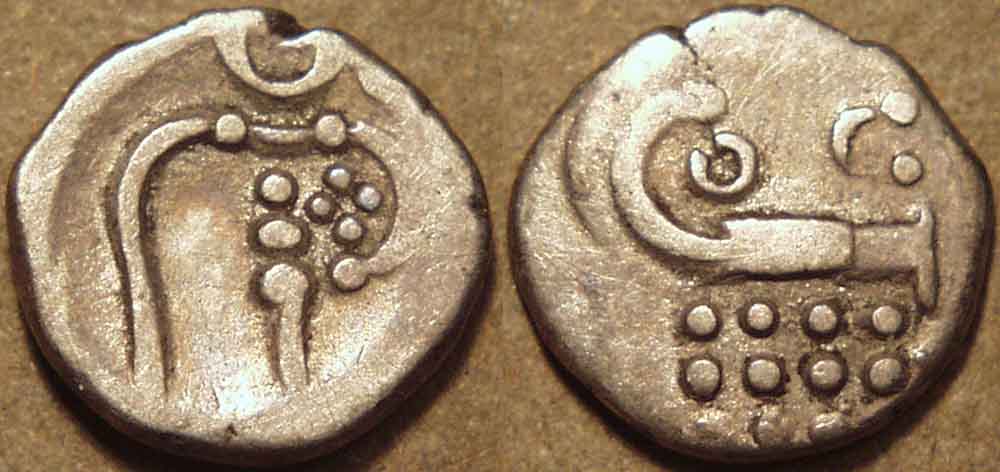
|
DUTCH INDIA: Silver double puttan (fanam), Cochin, c. 18th century
Weight: 1.01 gm. Diameter: 11 mm Die axis: 12 o'clock
Formalized figure of deity (Kali?) standing facing (figure looks a bit like a conch)
"Lazy J" with dots below (degenerate boar), o.c. above (for Oostindische Compagnie)
Reference: MNI 1587
|
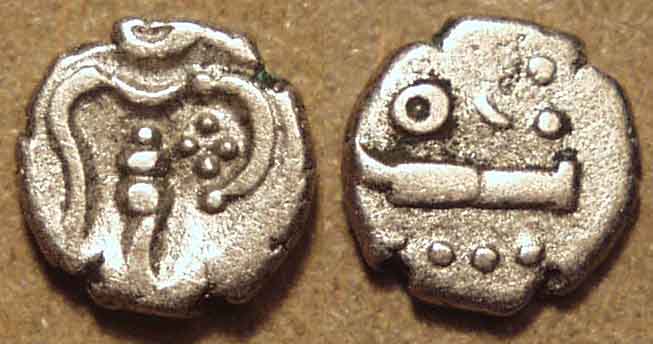
|
DUTCH INDIA: Silver fanam, Cochin, c. 18th century
Weight: 0.33 gm. Diameter: 7 mm Die axis: 12 o'clock
Formalized figure of deity (Kali?) standing facing (figure looks a bit like a conch)
"Lazy J" with dots below (degenerate boar), o.c. above (for Oostindische Compagnie)
Reference: KM 8
|
 |
Nagapatam (Negapatam) |
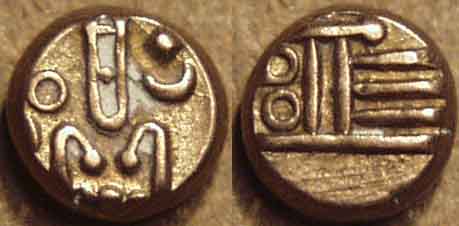
|
DUTCH INDIA: Gold fanam, Negapatam, early type, c. 17th century
Weight: 0.34 gm. Diameter: 5 mm Die axis: n.a.
Formalized figure of deity (Kali?) standing facing
Degenerate (geometric?) design
Reference: MNI 1604, Herrli 210 var
|
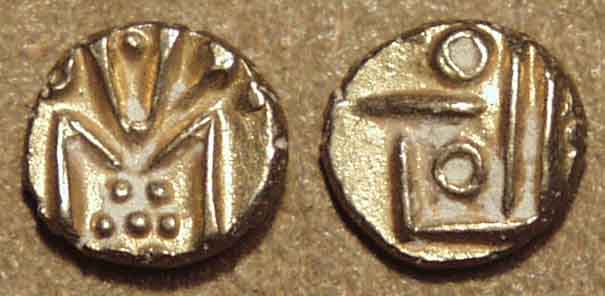
|
DUTCH INDIA: Gold fanam, Negapatam, late type, c. 18th century
Weight: 0.33 gm. Diameter: 6 mm Die axis: n.a.
Formalized figure of deity (Kali?) standing facing
Degenerate (geometric?) design
Reference: MNI 1604, Herrli 212 var
|
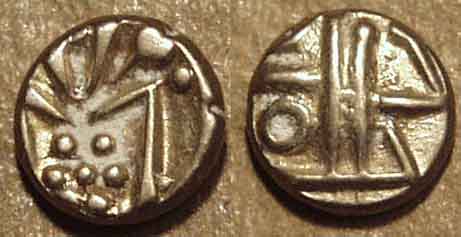
|
DUTCH INDIA: Gold fanam, Negapatam, late type, c. 18th century
Weight: 0.34 gm. Diameter: 6 mm Die axis: n.a.
Formalized figure of deity (Kali?) standing facing
Degenerate (geometric?) design
Reference: MNI 1604, Herrli 212 var
|
 |
Pondicherry |
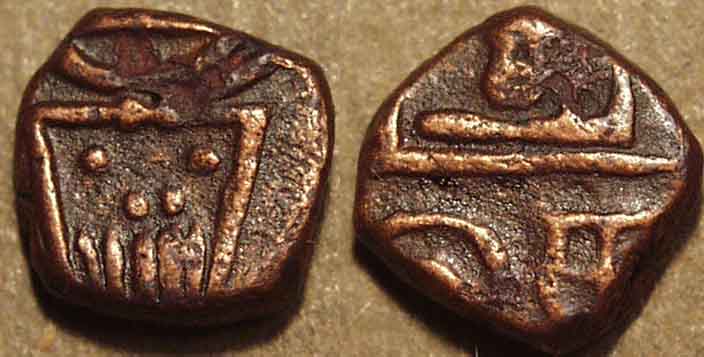
|
DUTCH INDIA: Copper 1-cash, Pondicherry, c. 1693-98
Weight: 1.18 gm. Diameter: 9 mm Die axis: 5 o'clock
Formalized figure of deity (Kali?) standing facing
Three-line Tamil legend: Pudu / cher / i
Reference: MNI 1616 var
|
 |
The Dutch occupied the French colony of Pondicherry for a brief 5 years (1693-98) and so this coin belongs to a very short issue.
|
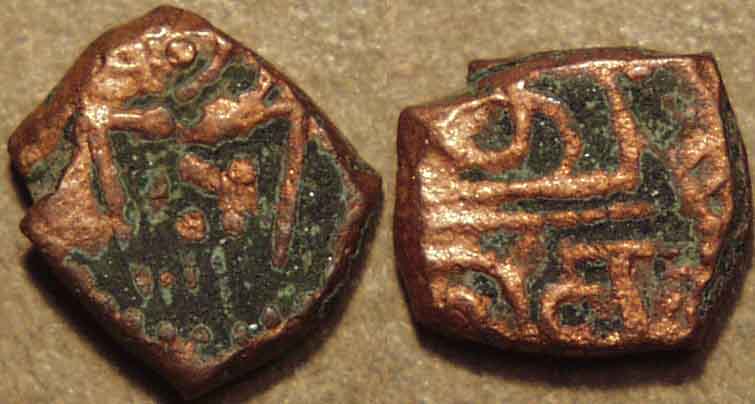
|
DUTCH INDIA: Copper 1-cash, Pondicherry, c. 1693-98
Weight: 1.16 gm. Diameter: 10 mm Die axis: 5 o'clock
Formalized figure of deity (Kali?) standing facing
Three-line Tamil legend: Pudu / cher / i
Reference: MNI 1616 var
|
 |
Pulicat |
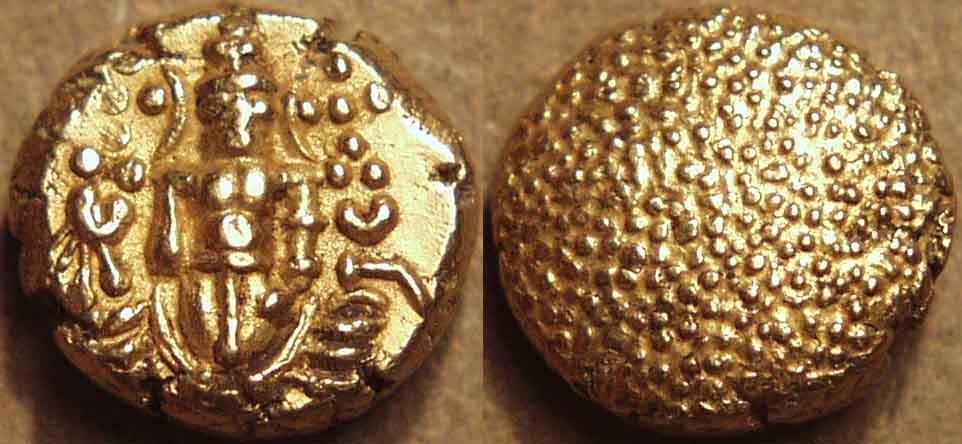
|
DUTCH INDIA: Gold pagoda, Pulicat, c. 1670-1784
Weight: 3.42 gm. Diameter: 11 mm Die axis: n.a.
Full length figure of Lord Venkateswara standing facing, a chakra on each side
Field of granulated dots
Reference: MNI 1594 var
|
|
|